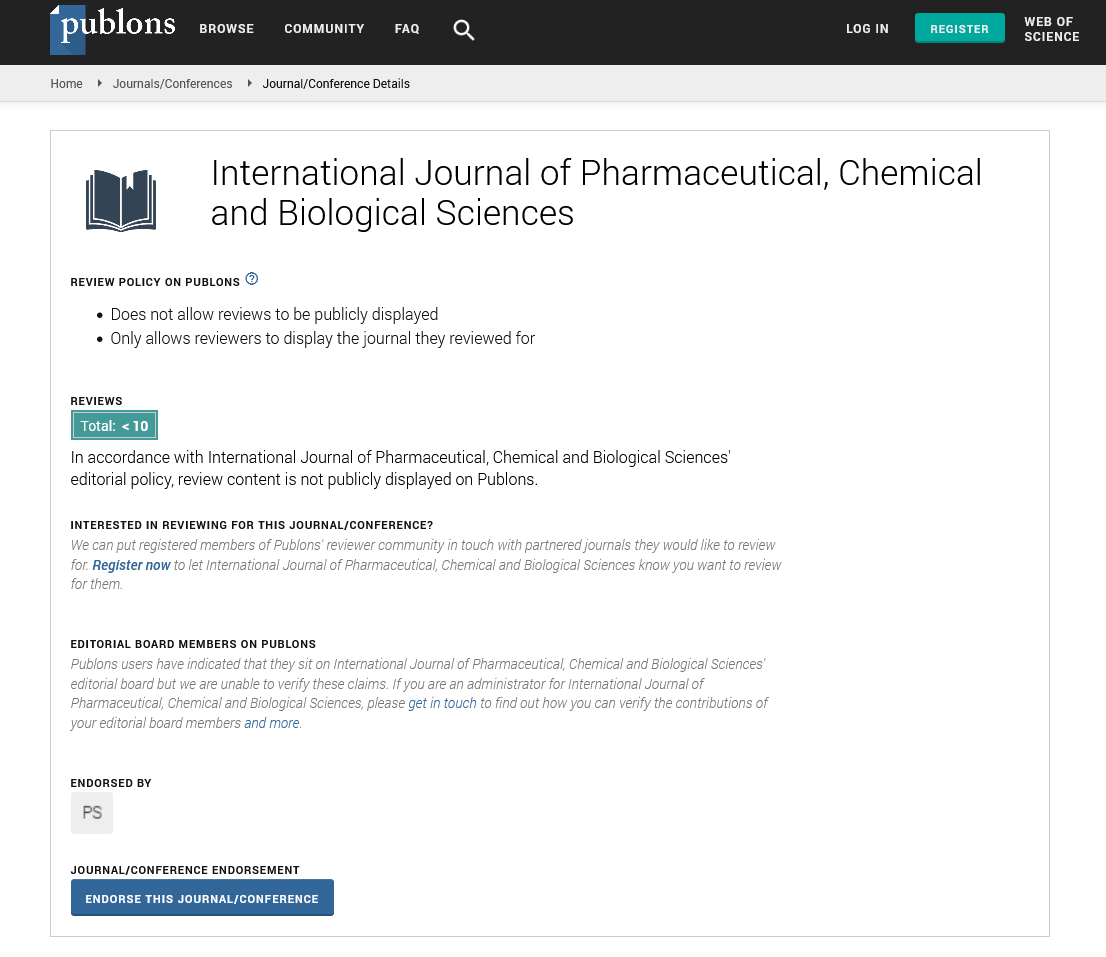Abstract
Author(s): Asha A. Kale, Sucheta A. Gaikwad, Swati Devare,Nirmala R. Deshpande andJyoti P. Salvekar
Juglone (5-hydroxy 1,4-naphthaquinone) is an active component of medicinally useful species, Juglans regia belonging to family Juglandaceae. It exhibits antibacterial, antibacterial, larvicidal and allelochemical properties to a considerable extent. Various methods have been tried for analysis of this bioactive naphthaquinone derivative. Present study deals with the development of a spectrophotometric method for its standardization in pure form and in stem bark extracts of J. regia. The method was tested and validated for various parameters as per the guidelines of ICH (International Conference in Harmonization). Juglone was estimated at 423 nm in methanolic medium. The detection and quantification limits were found to be μg/ml and μg/ml. The stability study was performed at neutral conditions. Spectral shifts in UV-Vis as well as FTIR spectra were executed using reagents like NaOMe, NaOAc and AlCl3. The results clarified the positions of the functional groups as they indicate redshift and in some cases hypochromic shifts. All results were in agreement with the various frequencies observed by special arrangement, close vicinity of the groups present in the molecule. This is a sensitive, precise, accurate and reproducible spectroscopic method for estimation ofjuglone. It is economic and can be easily applied for detection and validation of known and isolated compounds.

